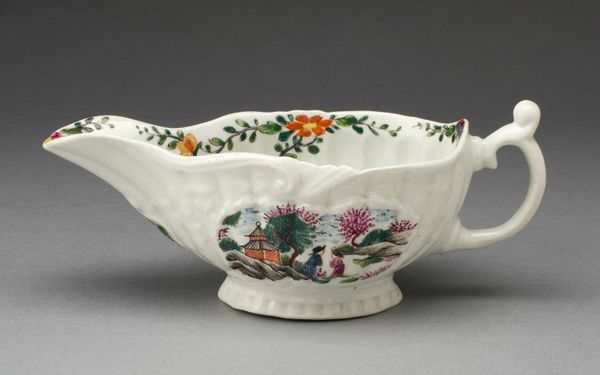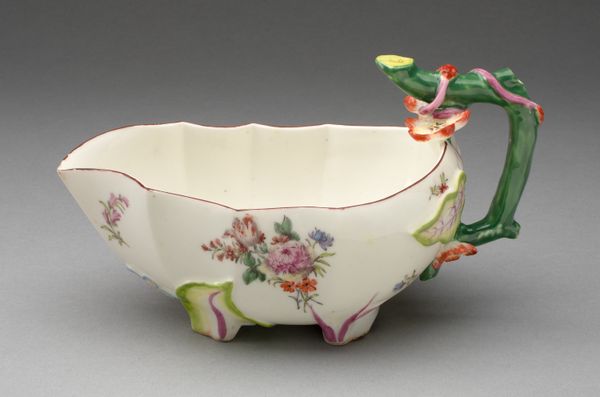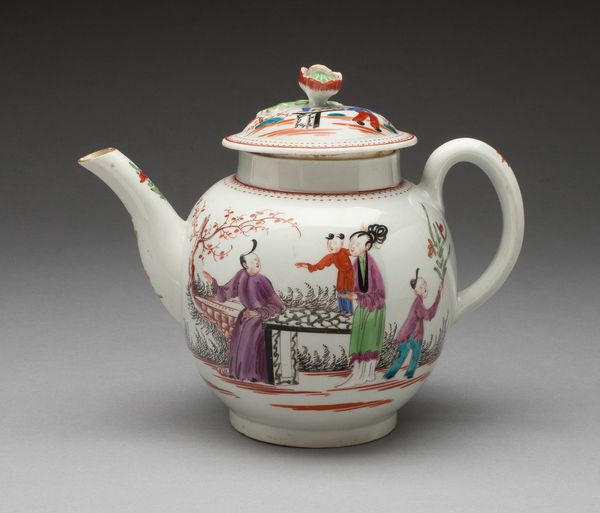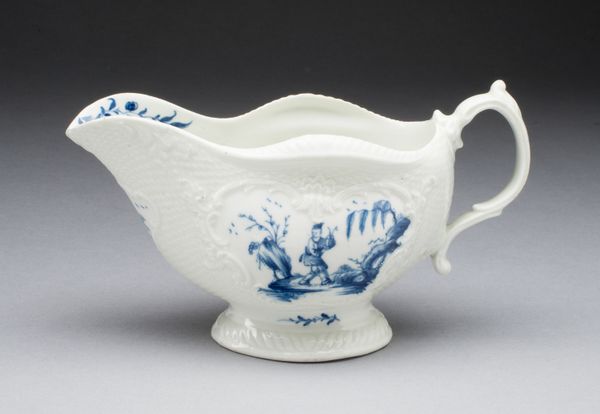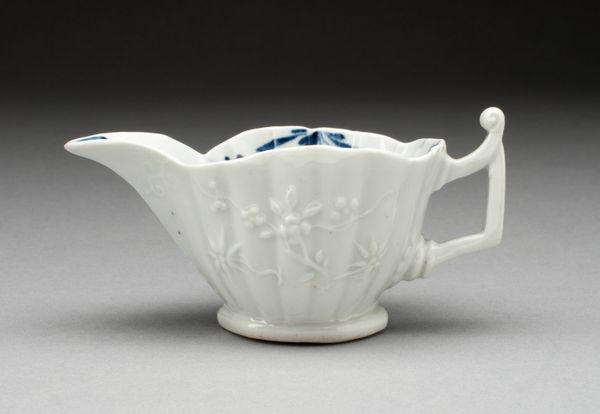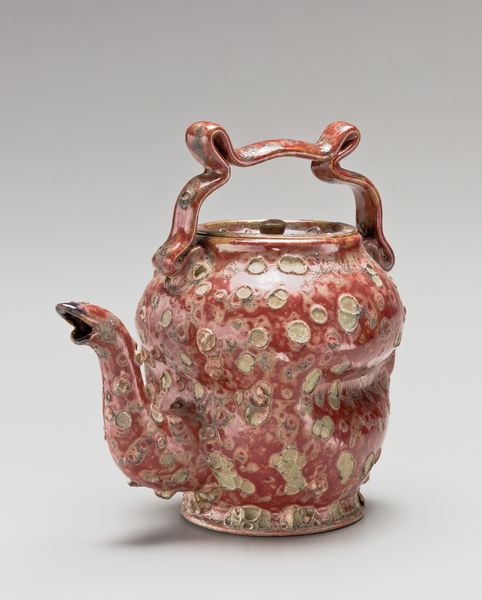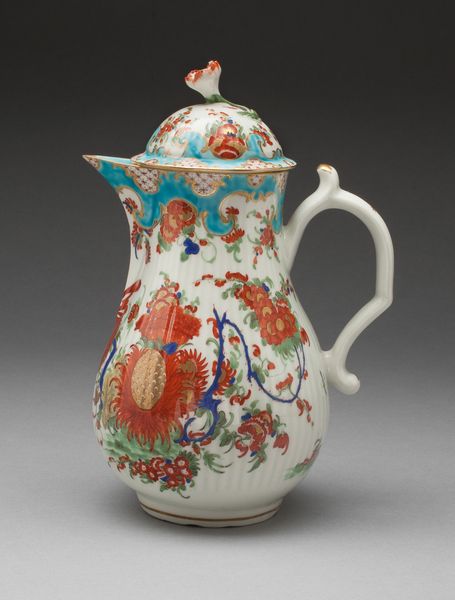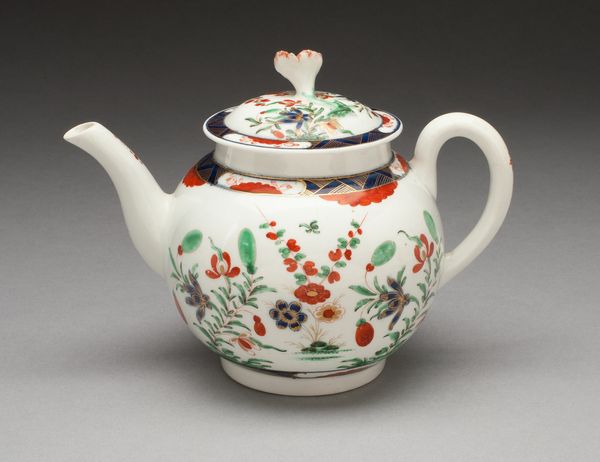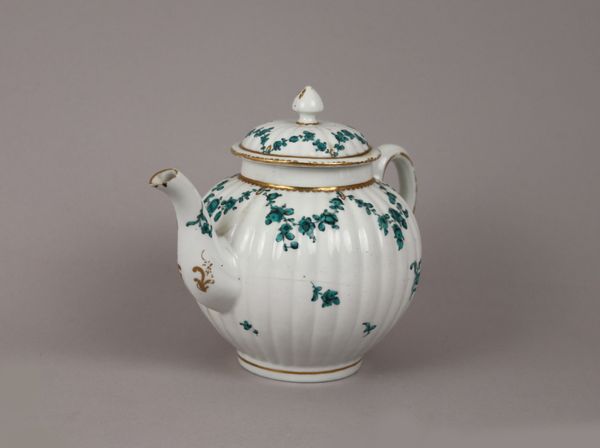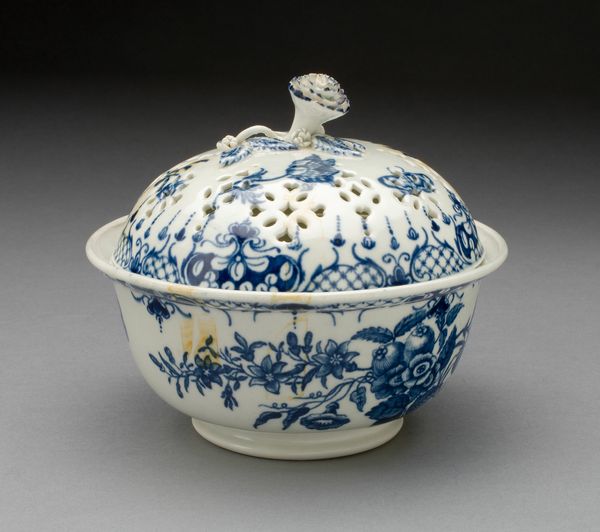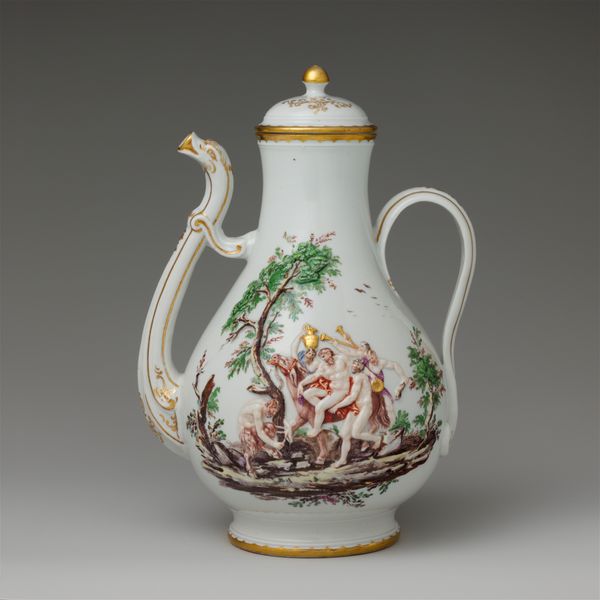
ceramic, porcelain
#
ceramic
#
jewelry design
#
porcelain
#
decorative-art
#
erotic-art
#
rococo
Dimensions: 11.1 × 21.6 × 8.6 cm (4 3/8 × 8 1/2 × 3 3/8 in.)
Copyright: Public Domain
Curator: What immediately strikes me is its whimsical, almost theatrical presence. Editor: Indeed. Let's delve into this Rococo "Sauceboat" crafted around 1755 by the Vauxhall Porcelain Factory. It exemplifies the period's taste for playful asymmetry and extravagant decoration. It now resides here at the Art Institute of Chicago. Curator: Vauxhall. In thinking about the Vauxhall Porcelain Factory and objects such as these, what were their makers communicating through the very designs and the decoration of the ware itself, I wonder? For instance, there seems to be an ambivalence in Rococo art between elite control and erotic libertinage. Editor: The materiality of porcelain, the gloss of the glaze—it serves to amplify the curvature of the form, that swelling body balanced upon its ornate pedestal, as though in anticipation of its offering. Semiotically, consider that each painted insect or stylized flower has a meaning within the lexicon of the decorative. Curator: I appreciate your formal assessment. But doesn't the choice of insects, bugs, and blooms signal more than just ornamental pleasure? Consider the era's social climate, with its rigid class structures yet burgeoning sense of individual expression among the aristocracy. Are these motifs reflecting the fleeting pleasures and underlying anxieties of a society on the cusp of profound change? Perhaps even sly digs at those in power. Editor: One cannot deny that the forms of the Rococo lend themselves well to hidden, subversive readings. And the insect motif has certainly undergone an interesting reassessment, as well as flowers and naturalistic themes being associated with class privilege and elite control. Curator: So, let's ponder the 'Sauceboat' as more than a mere vessel for condiments. In truth, what could it say about power, pleasure, and precariousness? Editor: It is difficult to view these objects outside their relationship with elite patrons. It speaks of their place, purpose, and the intended audiences who utilized it. Curator: Ultimately, the artwork encourages dialogue—connecting the gilded excess of a bygone era with our own. It's like glimpsing ourselves in a mirror, through the artifice. Editor: A testament to how form, function, and social context, as intertwined concepts, invite continued engagement.
Comments
No comments
Be the first to comment and join the conversation on the ultimate creative platform.
